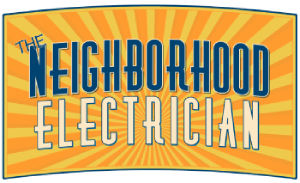Becoming a homeowner is exciting and comes with numerous advantages. However, there are also some pretty important responsibilities you’ll face that you likely did not have as a tenant. Keeping your home safe, efficient, and in good shape through maintenance and regular improvements is important. At The Neighborhood Electrician, we are here to help you with tips about electrical safety and maintenance. Don’t hesitate to reach out to us when you need an electrician to resolve a problem or make improvements to your home’s electrical system.
![Homeowner Tips from Your Electrician [infographic]](https://b1791603.smushcdn.com/1791603/wp-content/uploads/2021/02/135554-The-Neighborhood-Electrician_Approved_res.jpg?lossy=0&strip=0&webp=1)
![Homeowner Tips from Your Electrician [infographic]](https://b1791603.smushcdn.com/1791603/wp-content/uploads/2021/02/135554-The-Neighborhood-Electrician_Approved_res.jpg?lossy=0&strip=0&webp=1)
- Use proper light bulbs- Lighting fixtures have a marking that lets you know the highest wattage of light bulb that can be used safely. If you need more light, ask us to upgrade the fixture rather than putting in a higher wattage light bulb.
- Pay attention to dimming and flickering- Anything less than consistent light or power is an indication of a problem, and it could be a serious one. Always call an electrician in this situation as there could be a fire hazard present.
- Multiple failed outlets indicate a circuit issue- If one outlet stops working, it is usually the outlet itself. However, if several aren’t working, it is a problem with the wiring and could indicate a fire hazard situation.
- Never change a circuit breaker yourself- It can be tempting to swap out a circuit breaker if it keeps being tripped, but that is not a safe thing to do. Call an electrician so they can diagnose what is going on. Never swap for a higher amp circuit breaker because the wiring may not support it.
- Upgrade your older home- Older homes have electrical systems that often are not code compliant and can be highly dangerous. Rewiring a home is far more affordable than dealing with an electrical fire’s damage.
- Use electricity safely- There are many practices that are not advisable, such as placing electric cords under carpeting, using indoor-rated extension cords in an outdoor setting, not having the right outlets for wet areas, overdependence on power strips and extension cords, and not using a dedicated outlet for appliances.




